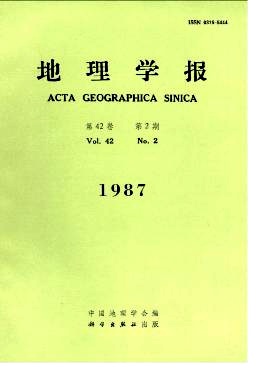Li Wenyi
This article is about a Quaternary vegetational analysis based on palynological works in East China. The purpose of this study is to expose the characteristics of the vegetation and its ecological environment of East China in the course of alternative appearances of the cold (glacial) and warm (interglacial) stages in Quaternary period.In East China, the Quaternary flora was established in Tertiary, and it is similar to thatof the present. In other words, since Late Tertiary, the taxa of plants had never been much changed.A clear difference in the development of Quaternary vegetation between the southern region and the northern region of East China, winch are bounded by Qinling mountain and Hu-aihe river, reflected strongly the difference of climatic conditions in the ice age.In northern region of East China, Ulmaceae, Fagaceae, Julandaceae and Betulaceae were the main components of the vegetation in late Pliocene. At the same time, Picea, Pinus and the herbs such as Composite, Chenopodiaceae and Polygonaceae etc. increased rapidly, while the deciduous trees decreased gradually. Therefore a vegetation landscape of a mixed conifer and deciduous forest emerged, which reflected that the climate became cooling, but still remained temperate. However, various traces of vegetational records suggest that the dry climatic factor had played an important role in Quaternary vegetation of the northern China.In southern region of East China, the flora has changed extremely little from Late Tertiary to the present. Podocarpus, Tsuga, Keteheria as well as Magnoliaceae, Fagaceae, Ju-glandaceae, Hamamenlidaceae, Araliaceae, Aquifoliaceae and Anacradaceae are always present in the pollen assemblages, and have been existing to the present. So it is clear that a cold climate which can destory the warm flora hadn’t been formed during the glacial period in East China.According to the distribution and development of the Quaternary flora in East China, any reflections concerning ice cap are not yet discovered, but the vegetational zones downward in the mountain in southern region. The development and expansion of dry terriher-bosa in northern region may be seen. Therefore, the Quaternary vegetation in East China differed from that of Europe, where the vegetation was destroyed frequently by ice sheet in the glacial period.A rough calculation of climatic condition in Quaternary cold stage can be made. In northern region the mean annual temperture is near 2癈 and the aridity index 2, which are similar to the persent climatic condition in the western aera of Daxinganlian mountains. And in the southern region, the ecological environment might be very similar to that of the mountainous region of Southwest China at present, where the mean annual temperature is 11℃ and mean precipitation 1000 mm being a cool humid condition.It seems that in Eurasia the steppe had possibly expanded to a broad area from south Europe to East Asia. However, the glacial climate invading southward to East China was limited. So a great deal of survive plants which originated from the tropical region are still per-served in South China.
